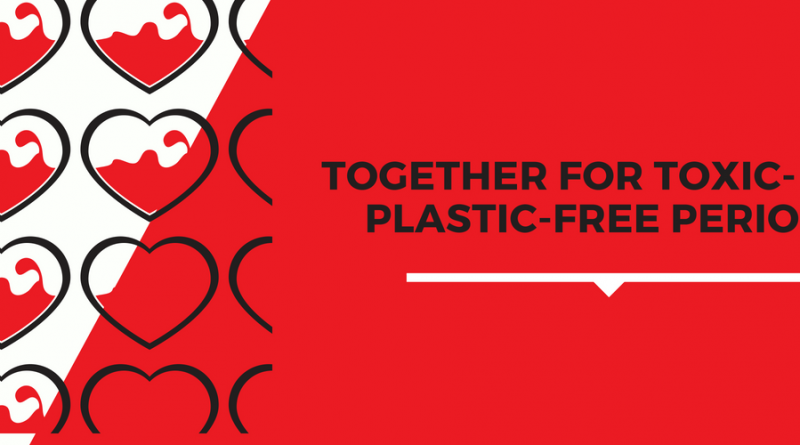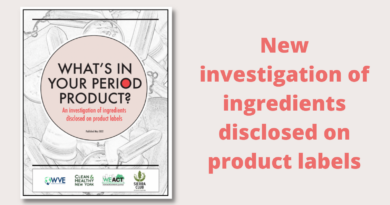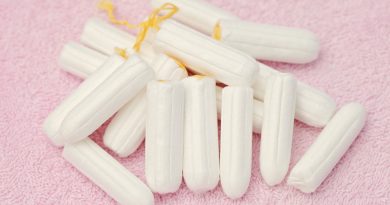Together for toxic- and plastic free periods
The challenge
The average woman will use between 12,000 and 16,000 disposable feminine
hygiene products in her lifetime. It can
take up to 100 years or more for a
plastic pad or applicator to break down. Increasing frequency of early puberty
will cause the use of feminine hygiene products to skyrocket in the near
future. General aging of the population also results in increased demand for hygienic products like
disposable pant liners, elderly pads, and more.
According to the report published by Allied Market Research titled, “World Feminine Hygiene Products Market-Opportunities and Forecasts, 2015-2022,” the global feminine hygiene product market is expected to garner a revenue of $42.7 billion, growing at a CAGR[1] of 6.1% during 2016-2022. In 2015, the Asia-Pacific region accounted for the largest market share of around 48.9%, owing to increasing awareness surrounding personal hygiene and higher adoption of sanitary pads in markets such as China, Japan and others[1].
Because conventional feminine hygiene products are not designed to be recyclable, reusable, or compostable, they end up in landfills, on illegal dumping grounds, in water sources, seas and oceans. They also block sewage systems. According to the book “Flow: The Cultural Story of Menstruation” released in 2009, the average woman throws away 250 to 300 pounds of “pads, plugs, and applicators” in her lifetime. Thus, during a woman’s fertile years, period-related garbage makes about 0.5% of her “personal landfill load” – comparable to the percentage of the annual trash attributable to plastic plates and cups. 1
Women and environment are highly contaminated with hazardous plastic chemicals in feminine hygiene products. Conventional sanitary pads are made up from up to 90% crude oil plastic and can contain associated plasticizing chemicals like BPA and BPS, and petrochemical additives (which are known endocrine disrupting substances linked to heart diseases and cancer). Phthalates, a common ingredient in tampon applicators, are known to disrupt hormone function and may lead to multiple organ diseases. Phthalates leach from finished products during or after use. They can be released from a product by heat, agitation, and prolonged storage.
Though there is a growing body of evidence confirming the presence of these and other toxic chemicals in feminine hygiene products, manufacturing companies are not legally required to disclose all of the ingredients in their products because of the gaps in the national regulations and related international instruments. Lack of clear labeling on disposable products and the potential for cumulative exposure to harmful chemicals is a troubling situation since feminine hygiene products are used by women on a monthly basis.
The
multi-billion-dollar industry that manufactures feminine and other hygienic
products, profits from the dominance of disposable products. They have succeeded
in making consumers believe that these disposables are not only the most
convenient and affordable option, but also have no health or environmental
risks. Industry is affirmed by many governments which, instead of addressing
the issue of product safety and information disclosure of the composition of feminine
hygiene products, do their best to promote their sales. For example, in Canada, the Department of
Finance announced that it would remove the goods and services tax (GST) and
harmonized sales tax (HST) on “a supply of a product that is marketed
exclusively for feminine hygiene purposes and is a sanitary napkin, tampon,
sanitary belt, menstrual cup or other similar product” effective on July 1,
2015.
[1] Compound Annual Growth Rate
Better
alternatives
Luckily there are many
kinds of safe plastic-free and toxic free options that are available in various
shapes and sizes to suit women’s needs and match their comfort level. Though
better solutions to conventional feminine hygiene products exist, they are not
available in many countries or are unknown to women, limiting their options. In
addition, in many countries, both in developing and developed ones, the
feminine hygiene industry has successfully convinced women that their period is
something which should be kept hidden and related hygienic products should be
quickly disposed of without thinking of the harm they may cause to women’s
health and the environment.
HEJSupport is working together with other NGOs for toxic- and plastic-free periods.
[1] https://www.prnewswire.com/news-releases/world-feminine-hygiene-products-market-is-expected-to-reach-427-billion-by-2022-575532151.html



